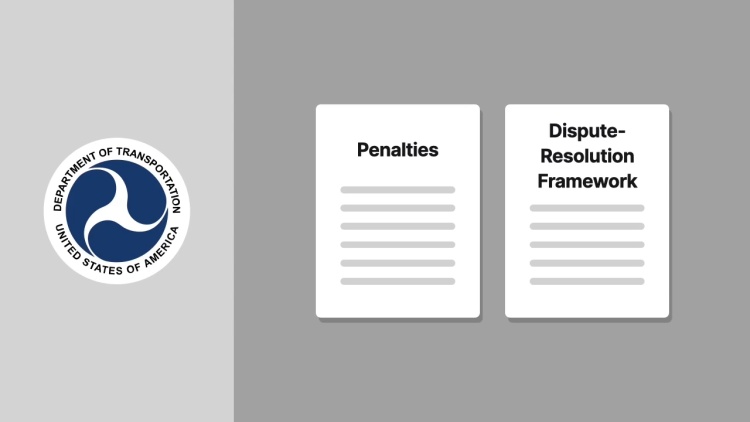Air Transport Association of America v. Department of Transportation
United States Court of Appeals for the District of Columbia Circuit
900 F.2d 369 (1990)
- Written by Susie Cowen, JD
Facts
In 1987, Congress enacted a series of amendments to the Federal Aviation Act related to civil penalties. These amendments included an increase in the maximum penalty for a single safety violation and the establishment of a two-year long “demonstration program,” under which the Federal Aviation Administration (FAA) had the authority to prosecute and adjudicate certain administrative policy actions. Nine months later, the FAA promulgated a body of regulations (“Penalty Rules”) to govern the adjudication of administrative civil penalty actions. The Penalty Rules established a schedule of civil penalties, as well as a comprehensive adjudicatory scheme for formal notice, settlement procedures, discovery, an adversary hearing before an administrative law judge, and an administrative appeal. The FAA promulgated the Penalty Rules without engaging in the notice and comment procedures outlined in § 553 of the Administrative Procedure Act (APA). The FAA took the position that notice and comment procedures were not required because the Penalty Rules fell within an exemption to § 553’s notice and comment requirements for rules of agency organization, procedure, or practice. The FAA also contended that the Penalty Rules fell within the “good cause” exemption to § 553’s notice and comment requirements.
Rule of Law
Issue
Holding and Reasoning (Edwards, J.)
Dissent (Silberman, J.)
What to do next…
Here's why 899,000 law students have relied on our case briefs:
- Written by law professors and practitioners, not other law students. 47,000 briefs, keyed to 994 casebooks. Top-notch customer support.
- The right amount of information, includes the facts, issues, rule of law, holding and reasoning, and any concurrences and dissents.
- Access in your classes, works on your mobile and tablet. Massive library of related video lessons and high quality multiple-choice questions.
- Easy to use, uniform format for every case brief. Written in plain English, not in legalese. Our briefs summarize and simplify; they don’t just repeat the court’s language.





